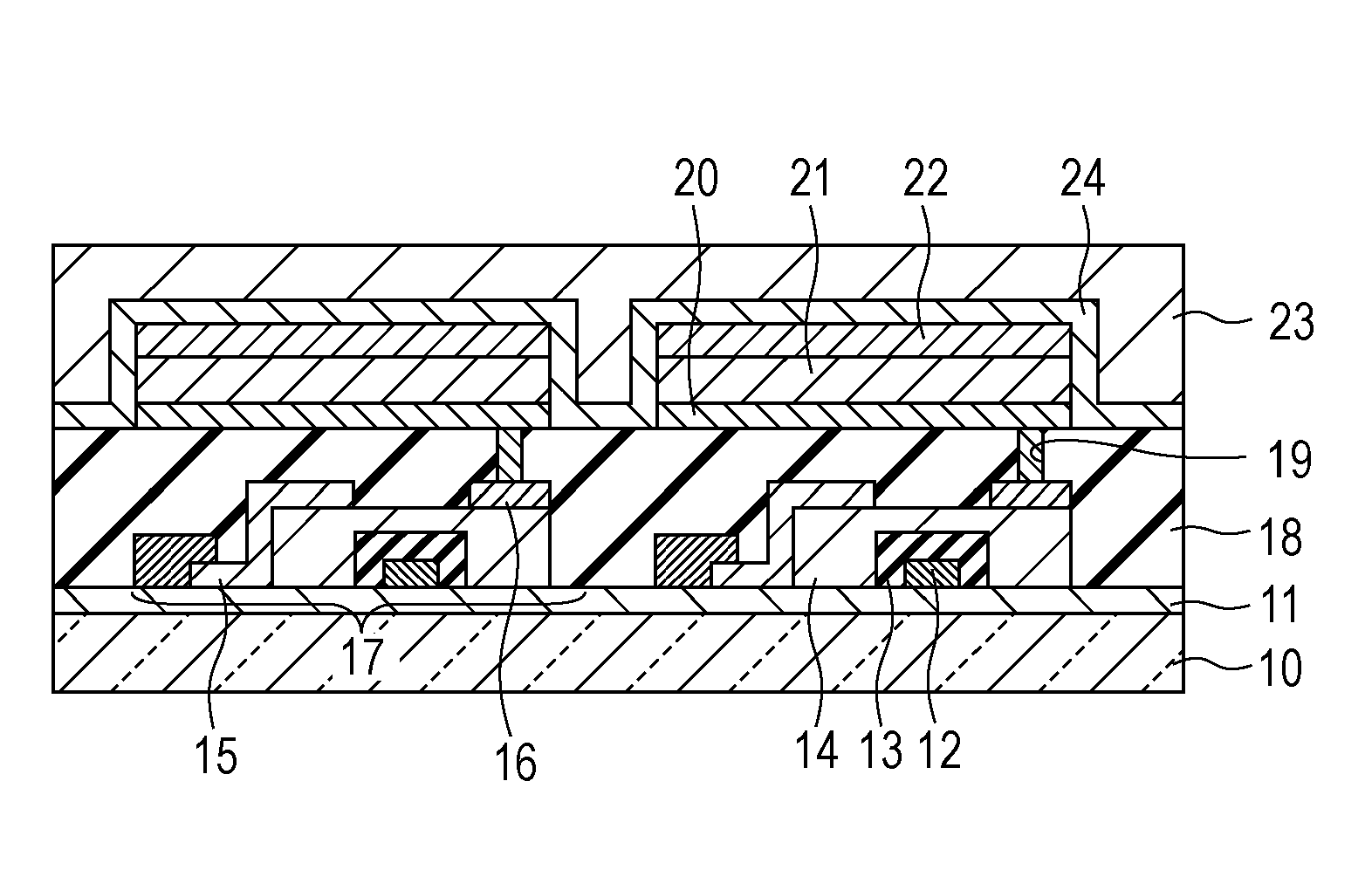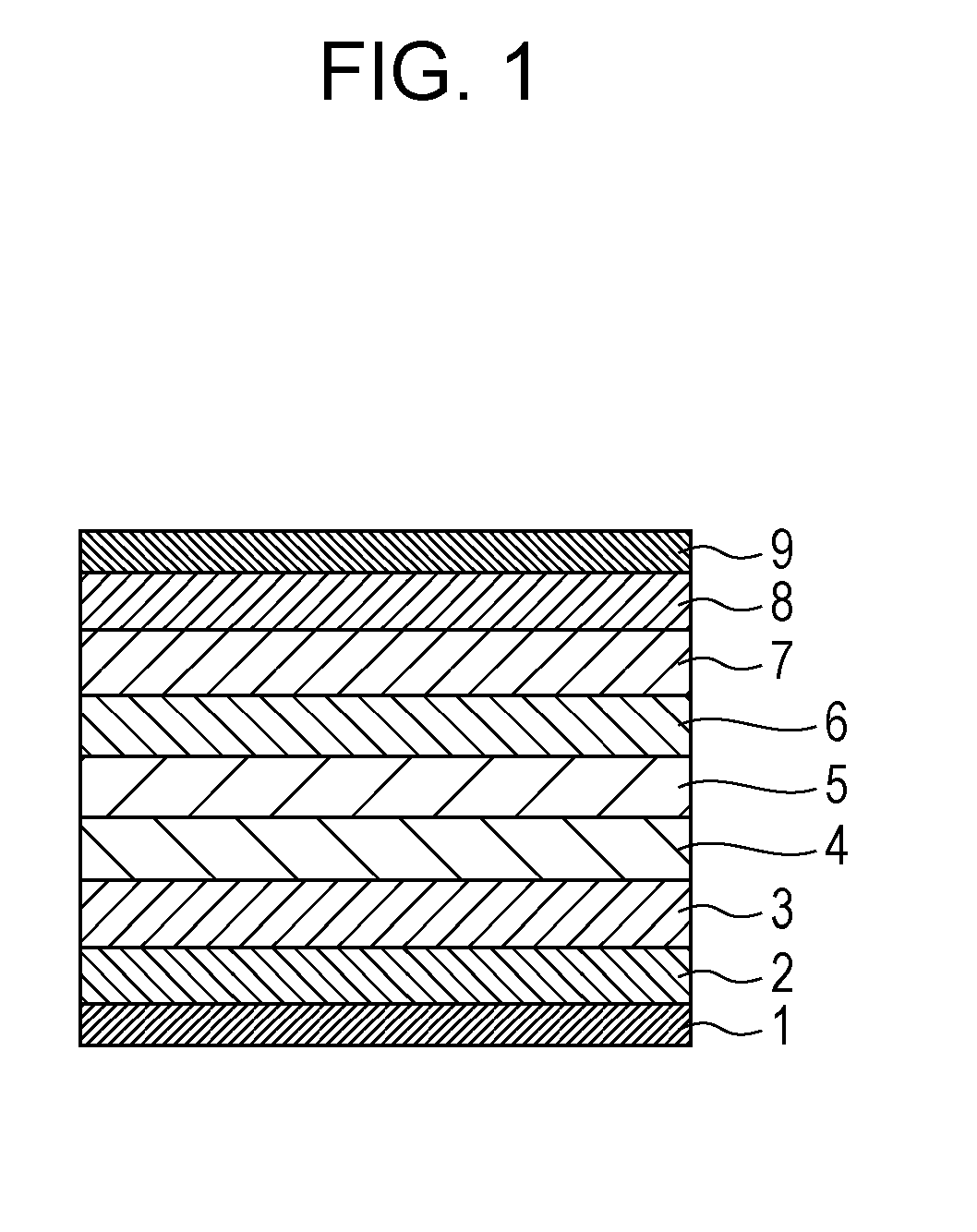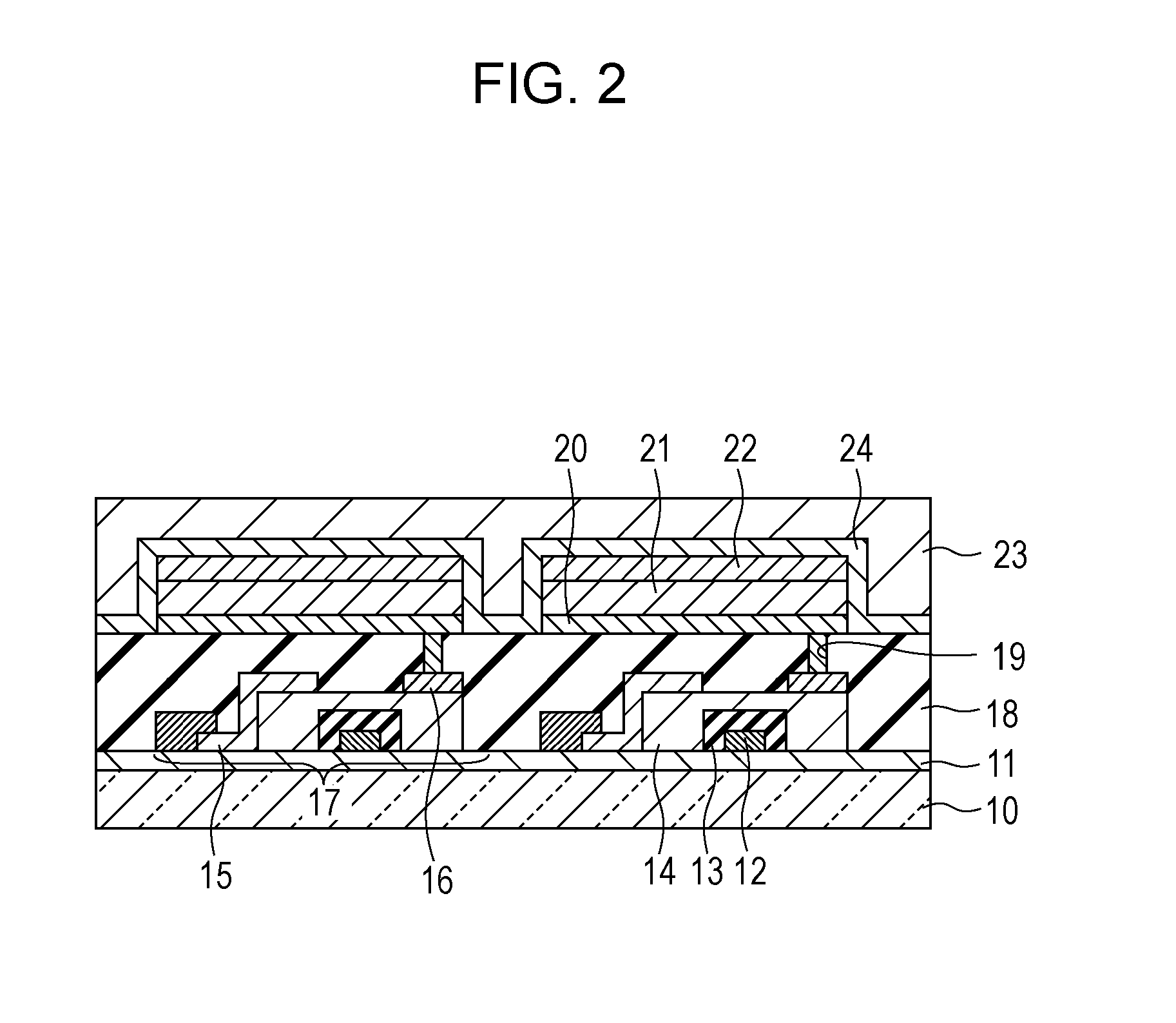Condensed polycyclic compound and organic light emitting element including the same
a condensed polycyclic compound and organic light emitting technology, applied in the direction of electrographic process, instruments, thermoelectric devices, etc., can solve the problems of degrading the chemical stability of some cases, and achieve the effect of excellent drive durability and high light emitting efficiency
- Summary
- Abstract
- Description
- Claims
- Application Information
AI Technical Summary
Benefits of technology
Problems solved by technology
Method used
Image
Examples
example 1
Synthesis of Example Compound 104
(1) Synthesis of Intermediate BrCl-1
[0184]
[0185]The following reagents and solvent were charged in a 300-mL recovery flask.
Cyclopenta[cd]pyrene-3,4-dione: 4.00 g (15.6 mmol)
Diisobutyl ketone: 4.44 g (31.2 mmol)
Ethanol: 60 mL
[0186]To this reaction solution, a solution prepared by dissolving 0.88 g (15.6 mmol) of potassium hydroxide in 15 mL of ethanol was slowly added dropwise at room temperature, and stirring was further performed for 10 hours.
[0187]After the reaction was completed, a mixture of water / methanol=1 / 1 was added to the reaction solution, and a precipitated product was filtrated and then dried, so that 1.97 g of the intermediate PyK-1 was obtained (yield: 35%).
[0188]Subsequently, the following reagents and solvent were charged in a 300-mL recovery flask.
Intermediate PyK-1: 1.97 g (5.43 mmol)
5-bromo-4-chloro anthranilic acid: 1.50 g (5.97 mmol)
Toluene: 100 mL
[0189]Next, after this reaction solution was heated to 80° C., 0.79 mL (5.97 mmol) ...
example 2
Synthesis of Example Compound 205
(1) Synthesis of Intermediate BrCl-2
[0214]
[0215]The following reagents and solvent were charged in a 200-mL recovery flask.
Cyclopenta[cd]pyrene-3,4-dione: 3.00 g (11.7 mmol)
1,3-bis(3,5-tert-butylphenyl)propane-2-one: 5.09 g (11.7 mmol)
Ethanol: 45 mL
[0216]After this reaction solution was heated to 70° C., a solution prepared by dissolving 0.66 g (11.7 mmol) of potassium hydroxide in 12 mL of ethanol was added to the reaction solution, and heating was further performed for 4 hours with stirring.
[0217]After the reaction was completed, a mixture of water / methanol=1 / 1 was added to the reaction solution, and a precipitated product was filtrated and then dried, so that 5.13 g of the intermediate PyK-2 was obtained (yield: 67%).
[0218]Subsequently, the following reagents and solvent were charged in a 300-mL recovery flask.
Intermediate PyK-2: 1.50 g (2.29 mmol)
5-bromo-4-chloro anthranilic acid: 631 mg (2.52 mmol)
Toluene: 75 mL
[0219]Next, after this reaction so...
example 3
Synthesis of Example Compound 303
(1) Synthesis of Intermediate BrCl-3
[0236]
[0237]The following reagents and solvent were charged in a 200-mL recovery flask.
Cyclopenta[cd]pyrene-3,4-dione: 3.00 g (11.7 mmol)
1,3-diphenylpropane-2-one: 2.46 g (11.7 mmol)
Ethanol: 45 mL
[0238]After this reaction solution was heated to 70° C., a solution prepared by dissolving 0.66 g (11.7 mmol) of potassium hydroxide in 12 mL of ethanol was added to the reaction solution, and heating was further performed for 3 hours with stirring.
[0239]After the reaction was completed, a mixture of water / methanol=1 / 1 was added to the reaction solution, and a precipitated product was filtrated and then dried, so that 3.68 g of the intermediate PyK-3 was obtained (yield: 73%).
[0240]Subsequently, the following reagents and solvent were charged in a 300-mL recovery flask.
Intermediate PyK-2: 2.00 g (4.65 mmol)
5-bromo-4-chloro anthranilic acid: 1.28 g (5.11 mmol)
Toluene: 100 mL
[0241]Next, after this reaction solution was heate...
PUM
| Property | Measurement | Unit |
|---|---|---|
| emission peak wavelength | aaaaa | aaaaa |
| emission peak wavelength | aaaaa | aaaaa |
| emission peak wavelength | aaaaa | aaaaa |
Abstract
Description
Claims
Application Information
 Login to View More
Login to View More - Generate Ideas
- Intellectual Property
- Life Sciences
- Materials
- Tech Scout
- Unparalleled Data Quality
- Higher Quality Content
- 60% Fewer Hallucinations
Browse by: Latest US Patents, China's latest patents, Technical Efficacy Thesaurus, Application Domain, Technology Topic, Popular Technical Reports.
© 2025 PatSnap. All rights reserved.Legal|Privacy policy|Modern Slavery Act Transparency Statement|Sitemap|About US| Contact US: help@patsnap.com



